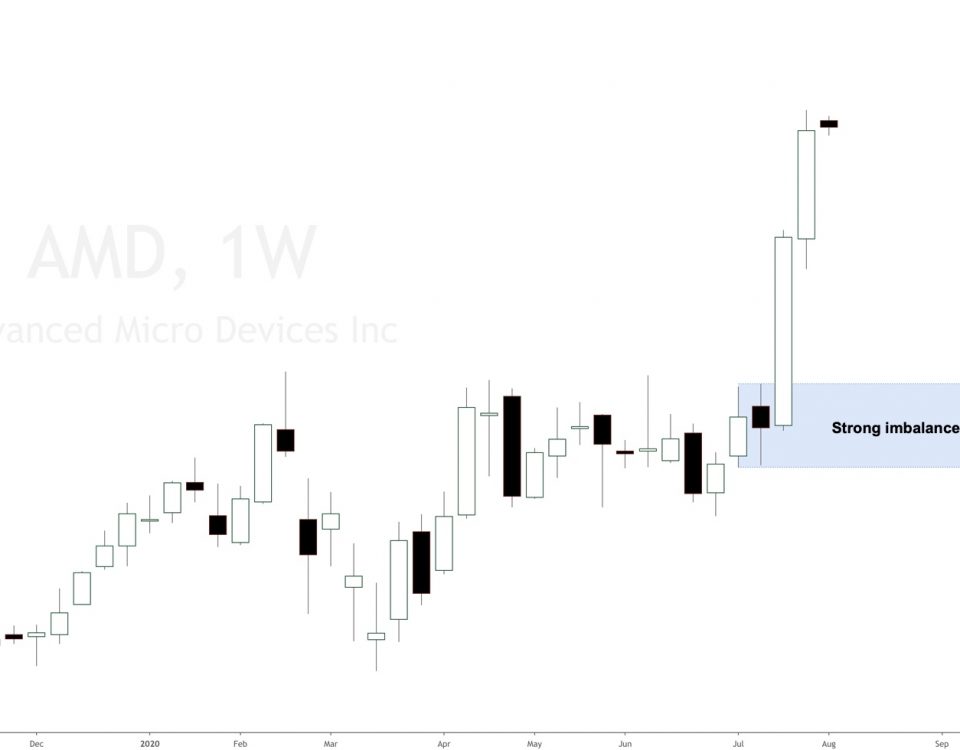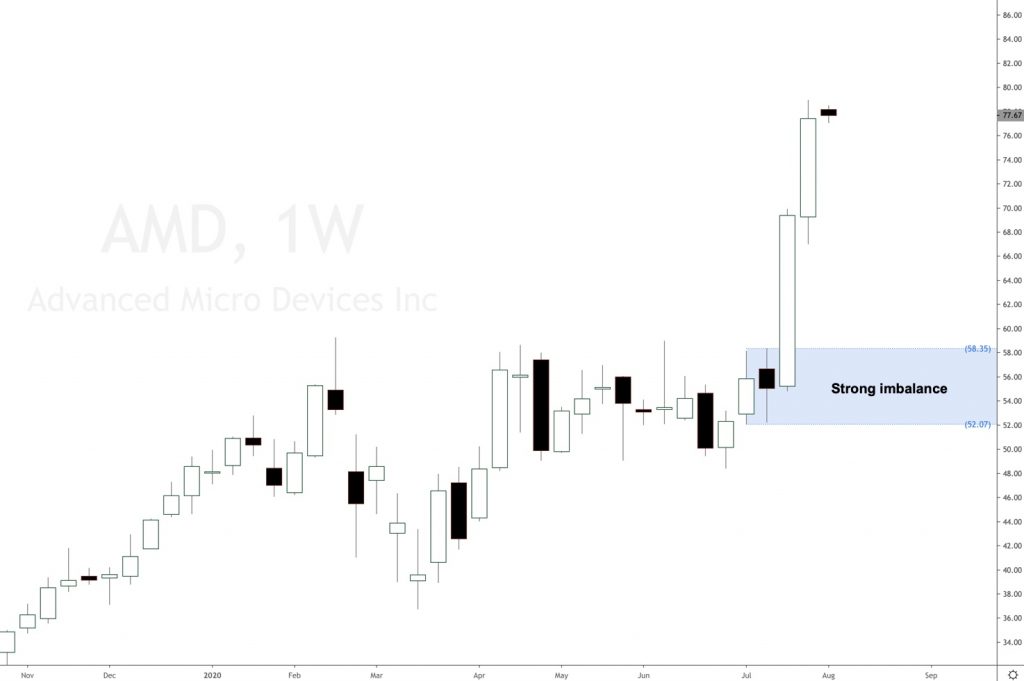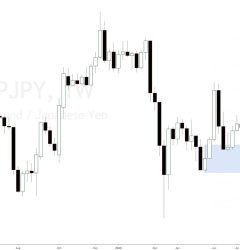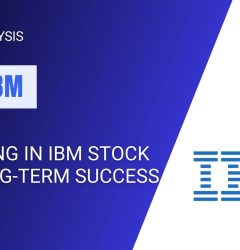04 Aug

Advanced Micro Devices, Inc. operates as a semiconductor company worldwide. The company operates in two segments, Computing and Graphics. At Set and Forget trading community, we’ve followed AMD stock very closely in the last months. A few members purchased AMD stock long-term shares, and the trades have been playing out nicely. As supply and demand traders, we must ignore the fundamental stock analysis and focus on what really matters, the type and strength of the new imbalances created in a clear trending market. That’s what AMD has been doing for quite a few months now.
Advanced Micro Devices AMD buy opportunity.
Take a look at the weekly timeframe attached below. A very strong imbalance has been created around the $57 price level. We expect AMD stock to continue rallying for some more time. That will allow shorter-term traders to buy shares of AMD in smaller timeframes or even use other stock trading strategies different from the supply and demand strategy we are trading at the trading community.
The weekly imbalance seen below is a much longer-term potential purchase, it could take some time for AMD stock to pull back down there, and it might return with a different trend. We’ll be watching this one closely and setting our stock alerts.

A supply and demand investor with a bullish bias toward AMD may have seen the company’s double-digit server chip market share goals as the initial step. Now, after Intel has delayed 7nm chips into 2023/2024, several analysts have come out with overall AMD market share targets in the 30% to 50% range. AMD already had reached CPU market shares approaching 20%, but the company has failed to generate the substantial data centre market share expected despite solid AMD revenue gains.
Advanced Micro Devices AMD forecast 2020
Read below what the updated financial targets for AMD are. Data was taken from SeekingAlpha.
- Revenue = $32.0 billion
- Gross Margins @ 55% = $19.25 billion
- OpEx @ 26% = $8.32 billion
- Operating Income = $10.93 billion
- Taxes @ 15% = $1.64 billion
- EPS = $9.29 billion/1.2 billion shares = $7.74
This is the kind of price action technical analysis you will learn in our trading community. You will learn how to locate new supply and demand imbalances and trade without using any indicators, no news, no fundamental analysis, no earnings announcements, no volume or VSA analysis. Just AMD supply and demand imbalances.
AMD supply and demand imbalances
As supply and demand traders, we do not need to pay attention to the news, fundamentals or any earnings reports. Once a big timeframe imbalance has gained control, earnings do just the opposite and react strongly to those imbalances. Why do you see positive earnings and then the underlying stock drops like a rock, or a negative earnings announcement and the stock rallies like a rocket out of control? You are probably missing the fact that there are big imbalances in gaining control.
Unless you are doing very short-term trading and scalping, you should not worry about fundamentals or earnings announcements on AMD stock.
You can use these imbalances to plan your trades in lower timeframes. Trading is just waiting for the right trigger points and scenarios to present themselves, this game has got a name and it’s called the waiting game. We need to patiently wait for the correct scenarios and setups to happen and wait for the price to pull back or dip into the price levels we want to trade, in our case these price levels are made of supply and demand imbalances.
Join our supply and demand stock trading course to learn how to use our supply and demand trading strategy.
There are several ways of buying stocks and futures. When trading stocks, you can buy shares of the underlying stock or use options strategies to go long or short at these specific supply and demand levels, long calls or long puts or spreads. You can even buy a CFD (contracts for difference) on AMD if you are in a country where it’s allowed.








